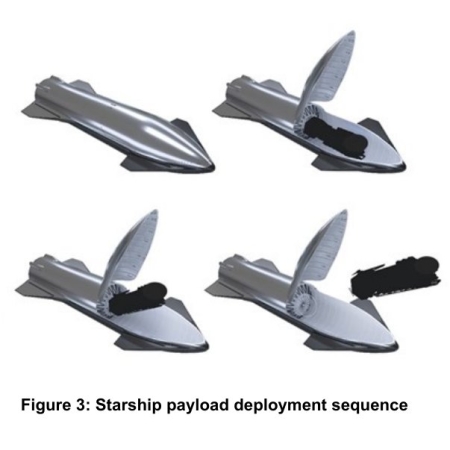Swarm and Momentus team up to launch and position satellites
Capitalism in space: Swarm, builder of the tiny cubesats dubbed SpaceBees, has teamed up with Momentus to use that company’s Vigoride cubesat upper stage to position its satellites in different orbits after launch.
Under an agreement announced April 22, Momentus will arrange rides for 12 Swarm SpaceBee satellites on a SpaceX Falcon 9 rideshare mission in December 2020 with additional SpaceBee launches scheduled in 2021 and 2022.
To offer global coverage for customers seeking to relay messages through the internet, Swarm satellites must be stationed in different orbital planes and spread out within those orbital planes like a string of pearls, Sara Spangelo, Swarm co-founder and CEO, told SpaceNews.
For the Falcon 9 launch in December, Momentus will not move Swarm SpaceBees to a new orbital plane. In the future, Momentus’ Vigoride in-space shuttle will offer Swarm the option of moving SpaceBees from the rocket’s drop-off point to different locations, Negar Feher, Momentus vice president of product and business development, said by email.
Both companies have raised significant investment capital.
Capitalism in space: Swarm, builder of the tiny cubesats dubbed SpaceBees, has teamed up with Momentus to use that company’s Vigoride cubesat upper stage to position its satellites in different orbits after launch.
Under an agreement announced April 22, Momentus will arrange rides for 12 Swarm SpaceBee satellites on a SpaceX Falcon 9 rideshare mission in December 2020 with additional SpaceBee launches scheduled in 2021 and 2022.
To offer global coverage for customers seeking to relay messages through the internet, Swarm satellites must be stationed in different orbital planes and spread out within those orbital planes like a string of pearls, Sara Spangelo, Swarm co-founder and CEO, told SpaceNews.
For the Falcon 9 launch in December, Momentus will not move Swarm SpaceBees to a new orbital plane. In the future, Momentus’ Vigoride in-space shuttle will offer Swarm the option of moving SpaceBees from the rocket’s drop-off point to different locations, Negar Feher, Momentus vice president of product and business development, said by email.
Both companies have raised significant investment capital.

